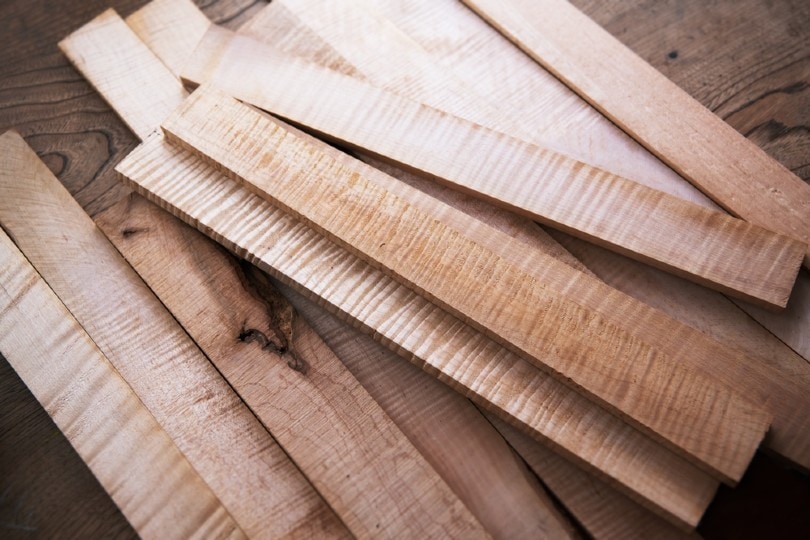There is no solitary “best” wood to use when it arrives to pyrography and wood burning. However, you will want to use a lighter-colored hardwood with a lot more subtle grain styles as a standard rule. Maple is a single of the most well-liked woods to use, but poplar and beech are two great selections as effectively.
Preserve in mind that there are hundreds of wooden species, and some could be a lot more suitable than other folks in diverse apps. For example, if you are heading for a particular type of design and style, then a a bit darker wooden may be much better. That is the lovely factor about art there is actually no correct or improper way to do it.
The 3 Best Woods for Pyrography and Burning
Maple

Owing to its subtle grain pattern that does not distract from the sample or drawing being burned and its light colour, maple wood is arguably a single of the most common woods to burn up. However, it is not the least expensive option offered for pyrography or wood burning. And because of how dense it is, you will need to have a top quality wood-burning resource that gets very very hot.
Poplar

All round, poplar has a refined grain pattern—as maple does—and it also has a great light-weight color that makes for a great pyrography canvas. The largest furthermore about poplar is its price. It is typically a considerably less costly wooden option. Another positive stage is it is a softer wood, so it is easier to work with as much as burning it goes as well as the prep beforehand. The downside is that poplar very often has more resin and sap in it than maple does, relying on the piece. This can be an inconvenience when wooden-burning.
Beech

Beech is one more excellent and well-known selection for pyrography and wooden-burning just since it’s normally extremely affordably priced. Like the other two common kinds of wooden, beech has a fascinating pale colour. Even so, its grain is significantly less subtle, and relying on your style, this can trigger some problems. The other downside is that it typically has significantly far more resin than the other two. But if you are looking for a low-cost wood that even now appears first rate to practice with, beech is a wonderful choice.
Preparing Wood for Pyrography and Wood Burning
If you want your pyrography to turn out properly, you’ll want to make sure that you prepare your wooden. There are truly only two main factors to do with making ready most woods, specially if you are making use of a single of the a few described previously mentioned.
- If you aren’t buying pre-cut pieces, you’ll want to cut the board down to size to save sanding wood that you’re going to cut off. Also, if you have a planer, then doing a couple of passes on each side will save time in sanding as well.
- The initial roughness of the wood will determine the sandpaper you use. As a general rule, starting with a 120 grit and going up to about 220 grit will be sufficient.
What Woods to Avoid
Overly dark wood will not show your art off very well. Also, pronounced grain patterns or resinous woods will be challenging to work with and unless you want to spend a ton of time preparing your piece of wood to work with, then avoiding uneven or rough-cut timber is a good idea.
From a safety perspective, any treated woods or synthetic products should be avoided even if everything else about them is perfect. When wood-burning, the heat will release these chemicals, and most of them are toxic to breathe in.
Pyrography on More Than Just Wood
Curiously enough, pyrography is not constrained to wood—although wooden is the most common thing to burn up. Quite a few other resources can be effectively burned. Some of these give the burn up a special result that you really don't get with wooden. Listed here are a few other practical supplies:
- Leather: The great thing about leather is that there is no wood grain to worry about.
- Ivory: Due to being illegal to trade, ivory isn’t commonly used anymore. But pre-embargo ivory can still be purchased.
- Paper: Believe it or not, paper actually makes for a neat pyrography canvas. It does take a more delicate touch, but it’s more durable than one might think.
There you go, a few of the ideal woods to get you started out with pyrography or wooden burning. This form of art has been close to for several several years, and there are some definitely gorgeous creations that appear out of it. You can pick up an economical kit on the web or your neighborhood craft keep to get you likely and see the place your creativeness normally takes you!
See Also:
Featured Picture Credit: GlamourGirl, Pixabay
Contents
